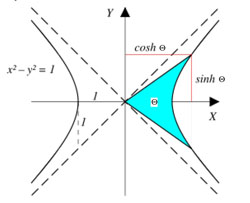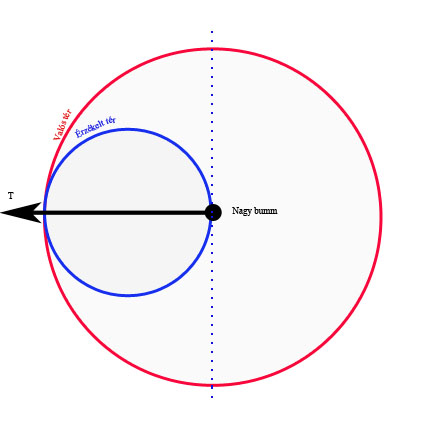About lies
How lies work in general and specifically in public and private life
I have already written a few lines titled “Brief thoughts about lies”. Seeing the absurdity of our public life, and thinking about my favorite subject: information theory, I want to summarize my current knowledge on lies a little more detailed.
At one point, in his 2009 lecture series physicist Gyula Dávid talked about the continuity of motion, and he found that the presumption of the continuity of motion is genetically fixed in humans, this is the heritage of the so-called mammal brain. Well, the ability to deceive is an even more ancient heritage of mankind: as soon as it developed in living beings that they regard each other as food, i.e. since there has been predator and prey, the ability of deception has also developed in the predator as well as in the prey.
After registration, you may ask for a translation of the full text by email.
Soul and conscience I.
The word ‘soul’ has so many interpretations that the science of psychology does not like to use it. Instead, psychology chooses the examination of the mind or consciousness as its subject. Religions and philosophies usually interpret soul as the spirit, and they set the idea of body against the concept of spirit. I have a notion of what soul is which has been taken a more and more definite shape. I'm not averse to using the word ‘soul’, and I even think it is a good phrase. I distinguish with this term the qualitatively new manifestation of the human mind and consciousness from the embryonic intellect and consciousness which can be found in the animal kingdom. I think the importance of the emergence of the human soul can only be compared to the change that took place when life emerged from the inanimate world. Both changes are such huge leaps in terms of the organization and complexity of systems that they are not comparable to the intermediate qualitative changes.
After registration, you may ask for a translation of the full text by email.
Pascal, a selection of François Mauriac
In a second-hand bookstore I discovered a Hungarian-language edition of Pascal’s Pensées from 1943, which is a translation of François Mauriac’ selection and introduction. Now I read Pascal again with delight, and I also find it very interesting what kind of thoughts Mauriac selected from Pascal’s legacy and what he wrote about Pascal.
"On a fraction of a study of vacuum" came first in the selection. It got me thinking what Pascal wrote about the contemporary attitude of physics and religious doctrines:
"... Just it is regrettable that there are blind people who attested with prestige of some authors in physics, instead of logical reasoning and experiments; at the same time we are horrified that others are seeking the truth with logical argument in theology, rather than they commit themselves to the Holy Scripture and the Fathers reputation."
After registration, you may ask for a translation of the full text by email.
Preview of a book
Garret Sobczyk, New Foundations in Mathematics: The Geometric Concept of Number1
I am excited about looking forward to this book, which was ordered by me via Prospero Bookstore website.
I look forward to the book because of my discovery of two-element numbers from which two types were analyzed in details by author of the book. I wonder how the author links the analytics of the numbers to the existing elements of the mathematics. I am curious about the 17th chapter mostly.
The contents of the book are the following:
Content
Chapter 1 Modular Number Systems 1
Chapter 2 Complex and Hyperbolic Numbers 23
Chapter 3 Geometric Algebra 43
Chapter 4 Vector Spaces and Matrices 67
Chapter 5 Outer Product and Determinants 84
Chapter 6 Systems of Linear Equations 95
Chapter 7 Linear Transformations on Rn 106
Chapter 8 Structure of a Linear Operator 117
Chapter 9 Linear and Bilinear Forms 137
Chapter 10 Hermitian Inner Product Spaces 153
Chapter 11 Geometry of Moving Planes 180
Chapter 12 Representation of the Symmetric Group 201
Chapter 13 Calculus on mSurfaces 223
Chapter 14 Differential Geometry of Curves 242
Chapter 15 Differential Geometry of kSurfaces 253
Chapter 16 Mappings Between Surfaces 275
Chapter 17 Noneuclidean and Projective Geometries 296
Chapter 18 Lie Groups and Lie Algebras 329
References 352
Symbols 357
Index 363
Copyright
Based on the table of contents I hope that I receive many solutions of my problems, so I may focus on what I did not yet find at writings of others. Ergo I may deal with the consequences of that idea what leaded me to the two-element numbers, i.e. I can work with new model of infinite cardinal numbers.
____________________________________________________________
1 http://www.amazon.com/New-Foundations-Mathematics-Geometric-Concept/dp/0817683844
Topology of two-element numbers I.
In the article titled „Comparison of two-element numbers”, the generalized norm of two-element numbers shows the topology of these numbers.
The topology of two-element numbers is reflected better, if we generally interpret the so-called quadratic infinitesimal environments, i. e. micro-environments, in the following way:
There exists a special number ε0 such that for all integer n it is true that ε0 < 1/n and ε0 is not equal to 0.1
Then the following three substantially different cases may arise:
1) The ε0 environments of the numbers are empty (except the given number), i. e. there is no actual existing infinitesimal number. This is the case of complex numbers.
____________________________________________
1 ε0 may not be a real number, because of it is smaller than all real fraction number, but it is not equal to 0.
After registration, you may ask for a translation of the full text by email.
The flood of Danube in Budapest, 08/06/2013.
Beyond the measured 860 centimeter maximum


Entropy, information, quantum phenomenon
Thinking of this and that
1. On the entropy in thermodynamics
The entropy change is always tested after an external effect in a closed system. The thermodynamics says nothing about this type of external influence, although this effect is the explanation for the rising entropy.
…
2. The immaterial nature of the information – media independency
…
3. Raising from the quantum level to the classical level
…
On Background Independence
The Background Independence and the Interpretation of the Space as Infinite Time
The subtitle refers to my intention that I would like to think about the background independence in terms of the space as infinite time. Does the thought of space as infinite time modulate the significance of the background-independence?
What is meant by background-independence in physics? Definition quoted by many people as follows: “background independence is a condition in theoretical physics, that requires the defining equations of a theory to be independent of the actual shape of the spacetime and the value of various fields within the spacetime. In particular this means that it must be possible to not refer to a specific coordinate system. In addition, the different spacetime configurations (or background) should be obtained as different solutions of the underlying equations.”1 It expresses the essence of Einstein's intention that the content of the laws of physics must be independent of the coordinate system of any observer.
______________________________________
1 Wikipedia, http://en.wikipedia.org/wiki/Background_independence
After registration, you may ask for a translation of the full text by email.
The Space as infinite Time
 In my previous writing – “Time, Space and Infinity” – some sections were unfinished. Now I completed them, and I made some corrections on this article. Of course the material is still incomplete, because increasingly more new questions arise as I make progress.
In my previous writing – “Time, Space and Infinity” – some sections were unfinished. Now I completed them, and I made some corrections on this article. Of course the material is still incomplete, because increasingly more new questions arise as I make progress.
From the above mentioned supplementation I emphasized here the longest extension of the article.
Thoughts about the perceptible Universe

I would like to raise an issue about the Universe's global characteristics, that is I would not like to write about the local space-time e.g. not about the curve space-time close to big mass.
In my teenage years – when I read first from Einstein relativity theory and Hubble effect – a picture of Universe took shape in me. This model of Universe was simple enough, but it demonstrated several physical and cosmological experiences.



